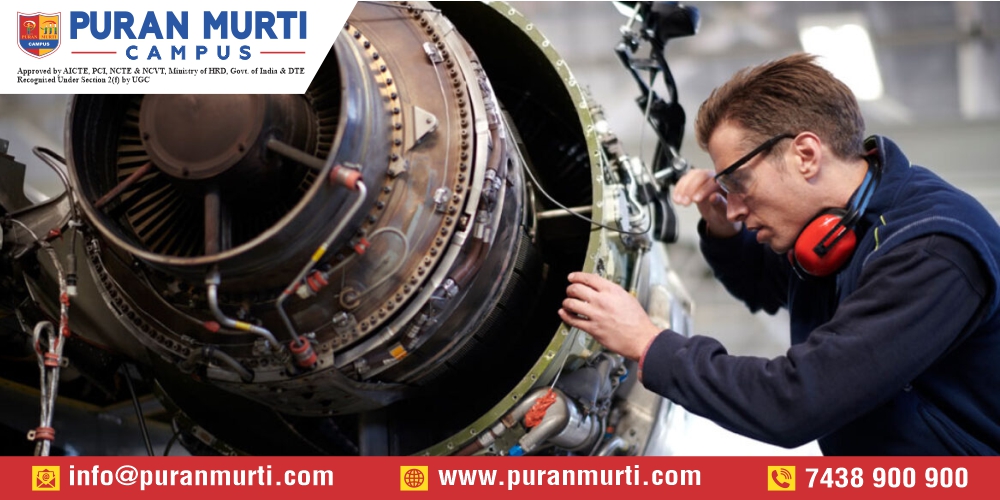The Future of Flight: Exploring Aerospace Engineering
Posted on : 5 June, 2024 12:26 pm
Introduction
- Aerospace engineering stands at the forefront of innovation, shaping the future of flight and space exploration. This blog aims to delve into the dynamic field of aerospace engineering, highlighting its significance, educational pathways, and the exciting career opportunities it offers. As the demand for advanced aerospace technology grows, engineers in this field are crucial in driving technological advancements, improving safety, and promoting sustainable aviation. Join us as we explore the world of aerospace engineering, uncover the latest innovations, and discuss the promising prospects for aspiring engineers.
What is Aerospace Engineering?
- Aerospace engineering is a specialized branch of engineering focusing on the design, development, testing, and production of aircraft, spacecraft, and related systems and equipment. It encompasses two main fields: aeronautical engineering, which deals with aircraft, and astronautical engineering, which focuses on spacecraft. This discipline integrates principles from mechanical, electrical, and materials engineering to advance aviation and space exploration.
Educational Pathways
- Educational pathways in aerospace engineering typically begin with a bachelor’s degree in aerospace engineering or a related field. This is followed by advanced studies, such as a master’s degree or Ph.D., for those interested in specialized research or academic careers. Programs often include coursework in mathematics, physics, materials science, and computer-aided design, alongside practical experience through internships and lab work.
Innovations in Aerospace Technology
- Innovations in aerospace technology are transforming the industry, with advancements in materials science, propulsion systems, and avionics. Developments such as composite materials, electric and hybrid propulsion, and autonomous flight systems are enhancing aircraft efficiency, reducing environmental impact, and increasing safety. Emerging technologies like hypersonic travel, space tourism, and reusable rockets are pushing the boundaries of what’s possible in aviation and space exploration.
Practical Training and Hands-On Experience
- Practical training and hands-on experience are integral to aerospace engineering education. Students engage in laboratory work, internships, and cooperative education programs, gaining real-world experience with aircraft and spacecraft systems. These opportunities allow students to apply theoretical knowledge, develop technical skills, and work on cutting-edge projects, preparing them for successful careers in the aerospace industry.
Career Opportunities and Paths
- Aerospace engineering offers diverse career opportunities in both the public and private sectors. Graduates can work as aerospace engineers, flight test engineers, or systems engineers in companies like NASA, Boeing, and SpaceX. Other paths include roles in research and development, design and manufacturing, or regulatory agencies, contributing to advancements in aviation, space exploration, and defense technology.
Skills and Competencies for Aerospace Engineers
- Aerospace engineers need a strong foundation in mathematics and physics, proficiency in computer-aided design (CAD) software, and expertise in aerodynamics and materials science. Critical thinking, problem-solving abilities, and attention to detail are essential. Additionally, strong communication skills and teamwork are crucial for collaborating on complex projects and conveying technical information effectively.
Challenges and Future Prospects
- Challenges in aerospace engineering include meeting stringent safety and regulatory standards, managing complex projects within tight budgets and timelines, and addressing environmental concerns such as emissions reduction. However, the field’s future prospects are promising, driven by advancements in technology, increased demand for air travel, and growing interest in space exploration. Sustainable aviation and emerging markets offer exciting opportunities for innovation and growth.
Conclusion
- In conclusion, aerospace engineering stands as a dynamic and vital field, driving innovation in aviation and space exploration. Despite challenges such as regulatory hurdles and environmental concerns, the future of aerospace engineering is bright. With continuous advancements in technology and a growing demand for air travel and space exploration, aerospace engineers have unparalleled opportunities to shape the future of flight and space exploration. By addressing challenges and embracing new technologies, the aerospace industry is poised for continued growth and innovation in the years to come.

